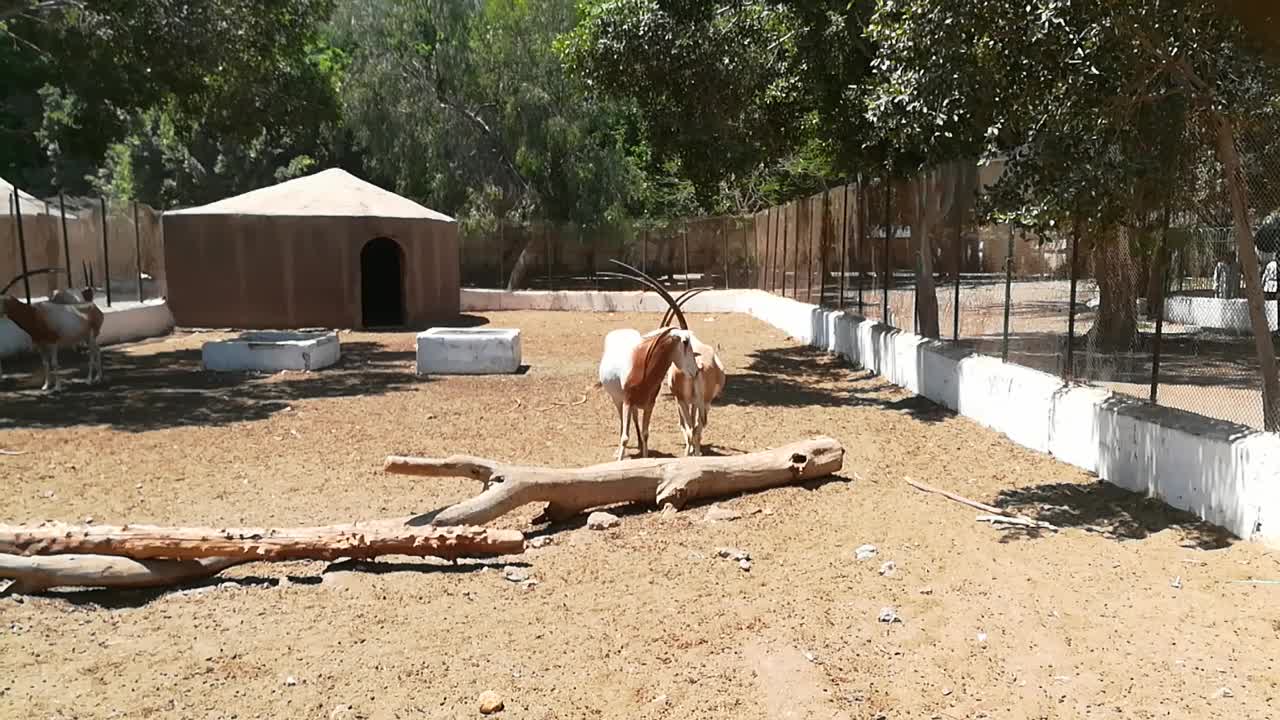Premium Only Content

Arrival Of Couple Scimitar Horned Oryx
Arrival Of Couple Scimitar Horned Oryx , Oryx are mostly white with reddish brown necks and marks on the face and a long, dark, tufted tail. The white coat helps reflect the heat of the desert.
Their black skin and tip of the tongue protects against sunburn while enlarged hooves enable the oryx to walk easily on sand. Dense eyelashes and strong eyelids protect against windblown sand.
Both male and female scimitar-horned oryx have long, ridged, sharp-tipped and curved backwards horns that grow to be several feet long.
Scimitar-horned oryx have an interesting way of coping with a shortage of water. They are able to tolerate a rise in body temperature by several degrees.
Being able to tolerate an internal body temperature of 116 degrees Fahrenheit means oryx do not need to sweat as much, which in turn conserves water.
This adaptive hyperthermia allows them to rid themselves of excess heat at night when their body temperatures can drop below normal.
In addition to this physiological adaptation to hot and arid environments, they can go for long periods without drinking water. They dissipate heat through their appendages.
Scimitar-horned oryx eat grasses, herbs, juicy roots, and buds. Acacia seedpods provide important nutrients for mothers with young calves. Wild melon and the twigs and shoots of Capparis are vital sources of moisture.
Feeding at night allows oryx to take advantage of higher water content in their forage. They produce very dry fecal pellets and highly concentrated urine.
-
 32:25
32:25
Tudor Dixon
1 hour agoKarol Markowicz on Freedom, Immigration, and Saving the American Dream | The Tudor Dixon Podcast
6.77K -
 2:03:25
2:03:25
The Quartering
5 hours agoFlag Burning, Free Speech, Church Attack & More With Andrew Wilson
203K297 -
 3:02:42
3:02:42
The Robert Scott Bell Show
20 hours agoDr. Peter McCullough, Vaccines: Mythology, Ideology, and Reality, Dr. Dan Sullivan, Chiropractic - The RSB Show 8-27-25
27.9K -
 1:21:03
1:21:03
Darkhorse Podcast
5 hours agoFreedom, Tyranny, and Childhood Lost: The 291st Evolutionary Lens w/ Bret Weinstein & Heather Heying
34.2K17 -
 LIVE
LIVE
LFA TV
12 hours agoLFA TV ALL DAY STREAM - WEDNESDAY 8/27/25
1,244 watching -
 2:34:01
2:34:01
Steven Crowder
5 hours agoBREAKING: Minnesota Catholic School Shooting Update - Shooter & Manifesto
358K505 -
 42:22
42:22
Stephen Gardner
2 hours ago🚨CHICAGO Mayor PISSED as Residents BEG Trump to send National Guard
23.4K8 -
 1:17:28
1:17:28
The HotSeat
3 hours agoChristian School Shooting in Minnesota – Faith Under Fire & Prophecy Being Fulfilled
19.1K18 -
 1:39:25
1:39:25
Film Threat
18 hours agoPEACEMAKER BLOWS GUNN'S DC! PLUS ALIEN: EARTH AND DEXTER RESURRECTION | Hollywood on the Rocks
9.5K -
 1:05:34
1:05:34
The Kevin Trudeau Show Limitless
8 hours agoKevin Trudeau Uncensored The Untold Story Of Wealth, Health & Business Success
7.72K1